

导航



If scientists ask you to help their work by reporting real-time information, will you help? You might be wondering; how can my contributions help? Wouldn’t it be too late if a thunderstorm is already happening? Shouldn’t this be the job of weather stations? How many people are participating? What kind of information do the scientists need? How does it work?
Good questions!

This is where citizen scientists come in! Citizen science is a collaboration between the general public and scientists in scientific research. In the weather space, there are many projects that connect the public and scientists to do amazing work! We will showcase these different projects in our HIWeather Citizen Science Demonstration Projects Series.
We are very excited to present our first feature story: WeatheX!
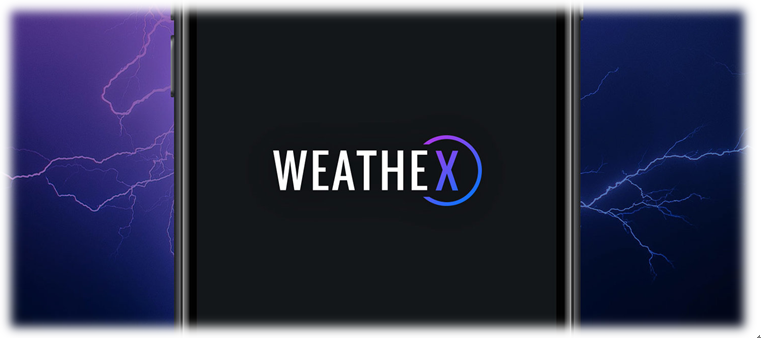
WeatheX, which stands for Weather Extremes, is a user-friendly app created in Australia that motivates users to share real-time severe weather events. The app has an intriguingly good-looking design that makes it enjoyable for people to use. All you need to do is choose a type of weather hazard, the intensity, and then upload. A real-time photo and a comment can be optional. As the Aussies would say: ‘Easy as!’. The goal of the WeatheX project is to integrate the public’s reports towards better weather understanding and forecasting for Australia.
Dr. Joshua Soderholm, a scientist from the Bureau of Meteorology is the research lead of the WeatheX project. He tells us that as technology evolves, the WeatheX App will have a groundbreaking potential for public participation to have significant impacts. He shared with us insights about the motivation, achievements so far, and the future.

Dr. Joshua Soderholm, WeatheX lead, is also a storm chaser
Severe weather events are quite common in Australia, which can be both damaging and disruptive. Severe weather can often be missed by official observations because Australia is a huge country with many remote areas. Outside capital cities, weather stations are located far apart from one another, and weather radar can’t see close to the ground where hazards impact people. It’s not easy to know what’s going on throughout the entire island continent.
Short-lived hazardous weather like hailstorms, damaging winds, heavy rainfall, and flash floods can be especially hard to capture. Currently, there is no better way to routinely record hail sizes other than through citizen science. The engagement of the general public can help fill the huge gap! When people report weather observations in real-time, they can assist meteorologists to verify the weather forecast and thereby improve warning services.
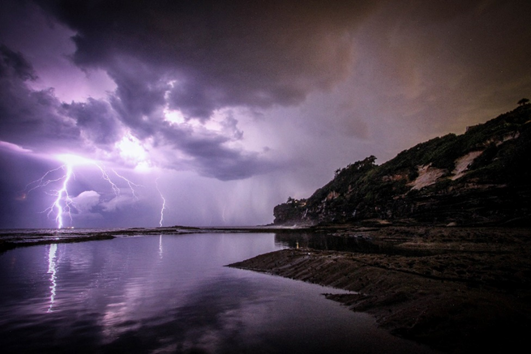
“Observations and reports are given the heaviest weighting and act as "truth". If no observations or reports are received, despite mounting evidence of the potential for severe phenomena, we can't be confident that severe phenomena will or has occurred.”
--- Dean Sgarbossa, an operational forecaster and co-lead of WeatheX

The app is developed and launched by Researchers from the ARC Centre of Excellence for Climate Extremes (CLEX) and Monash University with the support of the Bureau of Meteorology. WeatheX App was designed around five criteria: Accessible, Focused, Attractive, Minimal and Privacy.
So, how does the app work?
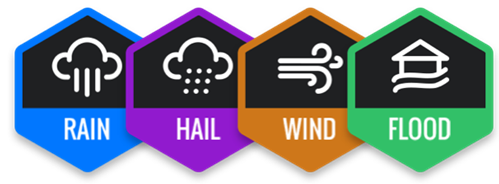
The four types of weather hazards you can report are rain, hail, wind, and flood; each has a distinguishing icon. You can also share the uploaded report on social media or with your friends and family. This is all done in a few clicks. Every hazard type gives you simple guides for which level of severity you might be observing. One of the highlights is the way it shows the potential sizes of hailstones using a sliding ruler and reference objects like coins, a golf ball and a tennis ball. You can see reports that have been uploaded within 24 hours including your own; the bigger the icon means more recent the uploads.
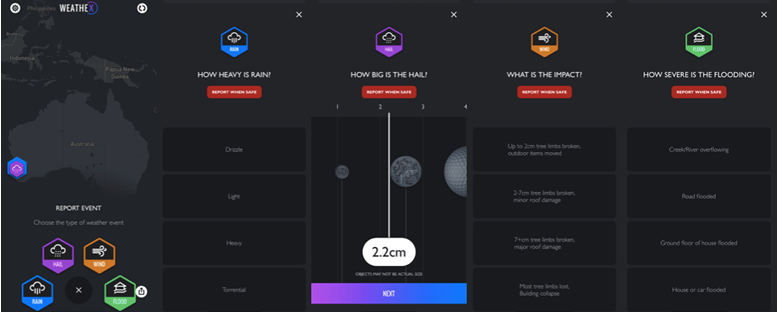
Since the launch of the WeatheX App, numerous extreme weather events have been captured by the public. As of July 2021, there were over 3400 reports with more than 350 pictures uploaded. Hundreds of reports have been uploaded during high impact events such as hailstorms in Sydney in December 2018, Southeast Australia in January 2020 and Brisbane in October 2020. The data has been used for weather forecasting verification by documenting footprints of the storms and for meteorologists to see how the weather progressed. People who contributed should know that “the data collected by WeatheX has been very valuable”.
Community engagement plays an important role in citizen science. It can be challenging to get people to use the app consistently according to Joshua, especially when they are not weather enthusiasts. WeatheX team has used different ways to get people’s attention by promoting through social media like Facebook and Twitter, news media, and science websites. They even asked weather reporters to mention the app and share some reports during the weather forecast session on the national evening news. Imagine your name and report is mentioned in front of people all over Australia for contributing to severe weather research, that would be pretty awesome.
Joshua also shared a tip for project leads of future citizen science: aside from creating your own social media accounts for promotion and engagement, you can get a wider audience through effective collaboration with other existing weather platforms, pages and groups where communities are already active. Engagement goes both ways.
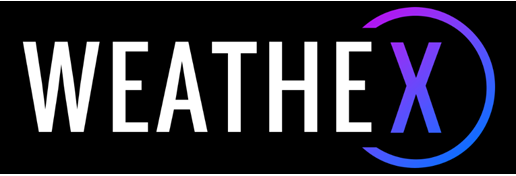
Now in its second version, WeatheX is currently exploring better integration with the Bureau of Meteorology to increase both the audience and functionality. Best wishes to Joshua and the WeatheX project!
If anyone is interested in the project and want to connect with Dr Joshua Soderholm, please let us know and we can help you contact him.
Now it’s time to download the awesome app! WeatheX
--We hope to promote citizen science by showing the general public what’s happening in that world and encourage more people to get involved. We also want to create a platform for various citizen science projects to share their journeys.--

Joint Centre for Disaster Research
Massey University
New Zealand
Users Login